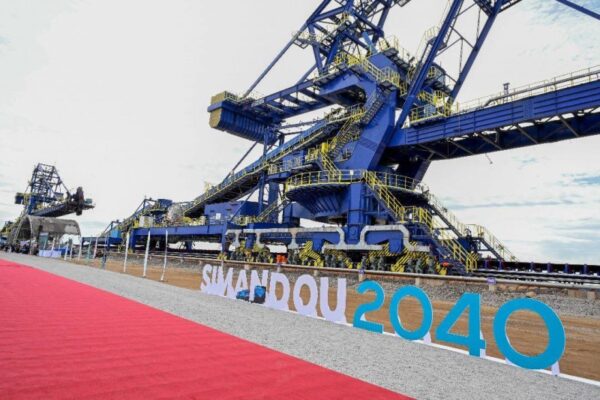It is an anecdote still unknown from the negotiations around the mega-project of Simandou: that of a masked Guinean delegation, on an official visit to Shanghai while most governments still kept their borders closed. In the midst of post-Covid uncertainty, Guinea chose audacity. This trip, the first of an African mission to China after the pandemic, would seal a historic turning point for Simandou and for the country’s place on the geopolitical chessboard with the signing of the Shanghai Agreements between WCS, Baowu Steel, and Guinea.
In a climate of introspection and global slowdown, Conakry made the bet of strategic openness. This trip was not just a symbolic gesture, but an initiative prepared and assumed at the highest level. The objective: to secure the Shanghai Agreement, the pivot of the restart of the Simandou project. By seeking revival on the ground, Guinea sent a clear message to its partners: it no longer waits for the world, it joins it at the decision-makers’ table.
In Shanghai, negotiations redefined the balances. On one side, the historical majors (Rio Tinto and Chinalco) and the new industrial partners WCS and Baowu Steel, keen to preserve their economic interests. On the other, a determined Guinea to enforce the state’s share in mines and infrastructure. Between these poles, Guinean economic diplomacy deployed an unprecedented method: legal rigor, technical availability, and relational flexibility.
This original diplomatic initiative was coupled with a vision: to make the Transguinean not only a mining corridor, but a development artery connecting communities and regions. Behind the numbers and signatures, a new idea of African cooperation was emerging: that of “economic non-alignment” where Guinea collaborates with everyone, without depending on anyone.
The Shanghai Agreement thus gave birth to a unique contractual architecture: a balanced sharing between Western and Asian capital and expertise and national governance. For the first time, an African country negotiated on an equal footing with mining giants, without intermediaries or complexes.
Just over two years later, when the convoys of the Transguinean crossed the 650 km that separate the mines from the port of Morebayah for the first time, the symbolism was evident. It was not only Guinean iron reaching the sea, but the proof that a country can transform a diplomatic vision into real power. History will remember that Simandou was written in Conakry, but took a decisive step in Shanghai.


